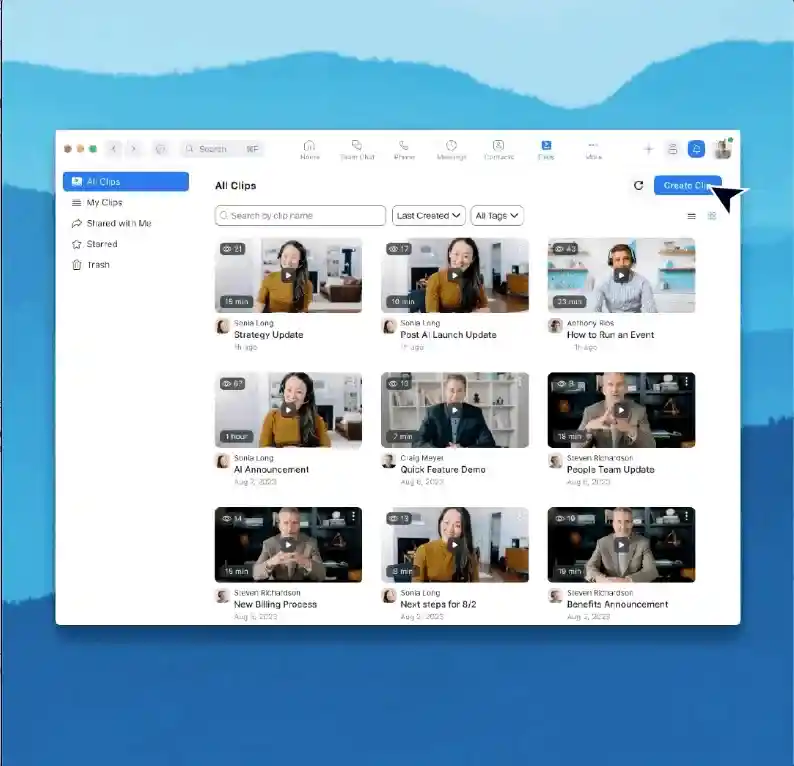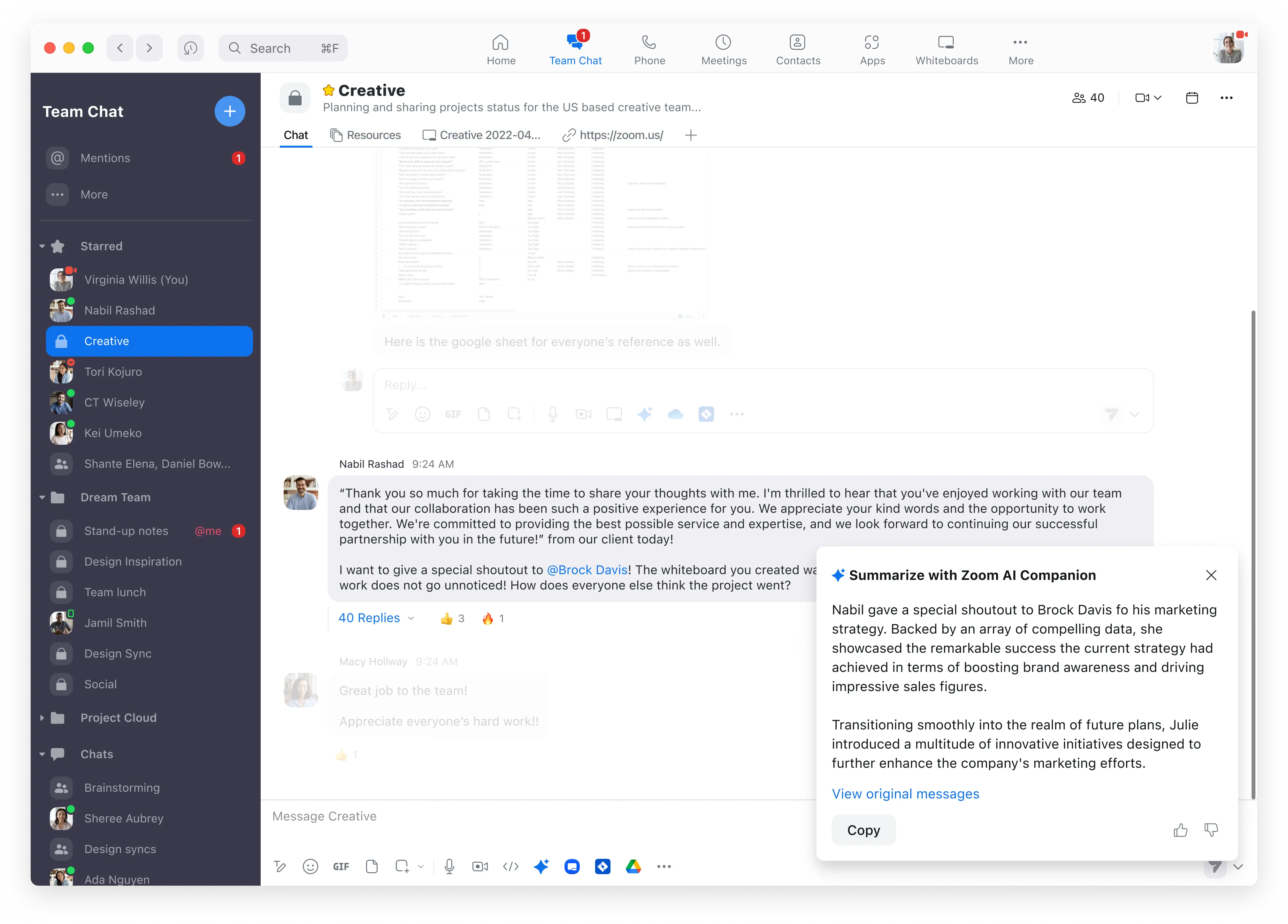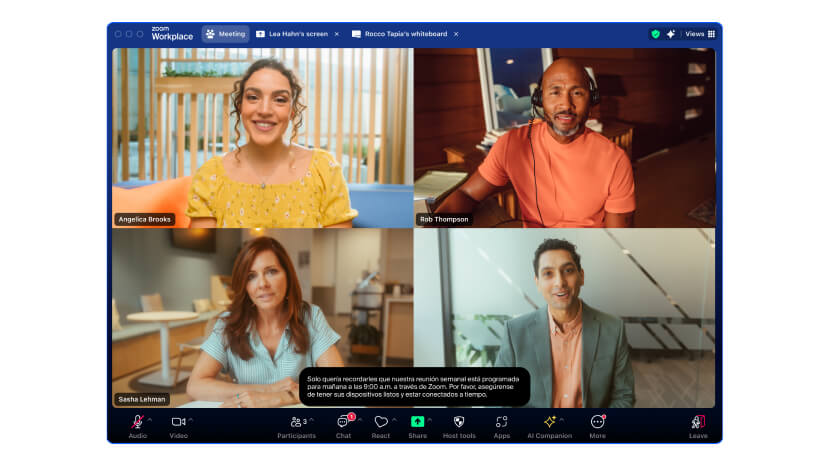Zoomies rely on Zoom Team Chat as a hub for communication, discussion, and decision-making. But when team members need to share a product mock-up or point out a bug, words and static images often don’t tell the whole story.
“In the past, we would take screenshots and write descriptions and paste them in chat or in a document. You could piece together what was going on, but it was much more time-consuming,” Darin said.
That process changed with the introduction of Zoom Clips, an asynchronous video tool built into the Zoom platform.
“With Clips, we can collaborate asynchronously over video. I find it’s the best tool for demonstration,” said Matthieu, a product manager. From France, he can work with engineering teams around the globe to fine-tune specific product features.
“The engineering team will work on a feature and record a short demo. When I get online, I can check to make sure it fits the requirements and design,” Matthieu explained. “I can make a comment at a specific point in a clip if I see something that doesn’t fit a requirement, and start a discussion from there.”

On the other end of that feedback loop is Kendall, manager of product design, and his team. “As a designer, sometimes I receive a requirement within a Clips link. It gives me context, like I just had a walk-through meeting with the product manager,” Kendall said. “If I have a draft design ready in the afternoon, I can take a few minutes to prepare a clip to present my ideas, and the following morning, I will have comments on my clip or in Team Chat. If everything works well, they post their thumbs-up to the clip.”
Emoji reactions aren’t the only advanced features available in Zoom Clips. To help improve video quality, Kendall and Matthieu can touch up their appearance, leverage noise suppression, or even use an avatar. Once a clip is shared, they can see how many people have viewed it and respond to questions and comments that have been left at specific points in the clip.
Darin sees this solution to the back-and-forth of chat messages as having a huge return on investment for his team. “We have clear communication in a very short amount of time,” he said.
Matthieu finds that even when time differences aren’t an issue, there are situations where he prefers a clip recording to an actual meeting. “Demos in meetings can be less effective — people need to prepare, and they might feel pressure about answering questions live,” he said. “With Clips, you can just start recording. The time spent on a demo has decreased significantly.”
As a viewer, Matthieu prefers having the control to watch a demo when it’s most convenient for him, instead of live during a meeting. “I find my attention is higher. I can move back to the beginning or to a specific point if I need to.”
Asynchronous communication gives Laura, a content designer in the U.K., time to digest the information being presented and organize her ideas. “Personally, when I’m on the receiving end of a clip, it’s wonderful to have a little space to think about my response,” she said. “Clips make communication a little easier for me.”

















